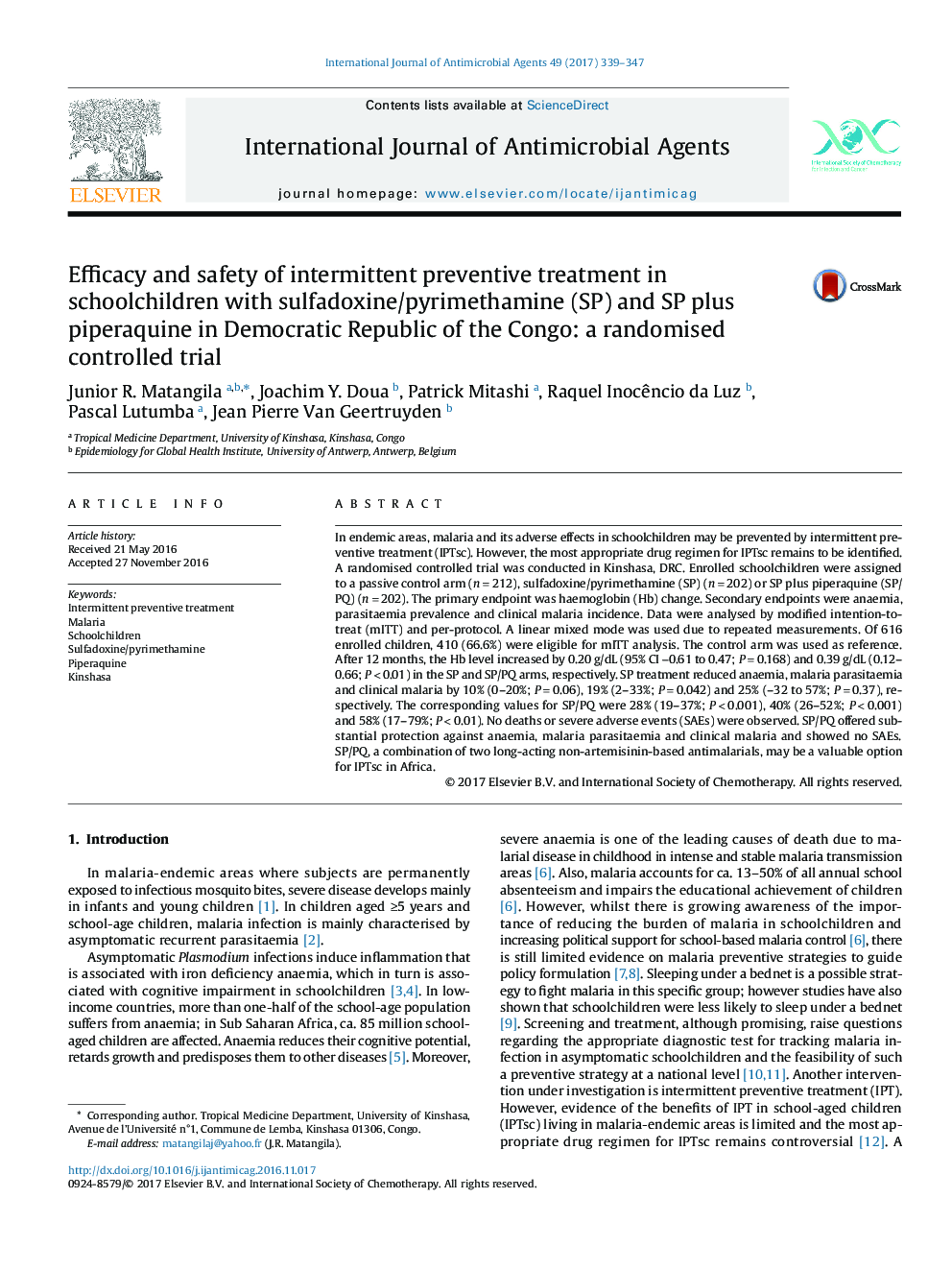| کد مقاله | کد نشریه | سال انتشار | مقاله انگلیسی | نسخه تمام متن |
|---|---|---|---|---|
| 5667118 | 1591745 | 2017 | 9 صفحه PDF | دانلود رایگان |

- Sulfadoxine/pyrimethamine (SP)â+âpiperaquine (PQ) could be a suitable drug regimen to prevent malaria in schoolchildren.
- Advantages of SP/PQ include its acceptable efficacy and feasible scheme, allowing a 4-month dosing interval.
- SP alone is not effective to prevent malaria and its adverse effects in schoolchildren in malaria high-transmission areas.
In endemic areas, malaria and its adverse effects in schoolchildren may be prevented by intermittent preventive treatment (IPTsc). However, the most appropriate drug regimen for IPTsc remains to be identified. A randomised controlled trial was conducted in Kinshasa, DRC. Enrolled schoolchildren were assigned to a passive control arm (nâ=â212), sulfadoxine/pyrimethamine (SP) (nâ=â202) or SP plus piperaquine (SP/PQ) (nâ=â202). The primary endpoint was haemoglobin (Hb) change. Secondary endpoints were anaemia, parasitaemia prevalence and clinical malaria incidence. Data were analysed by modified intention-to-treat (mITT) and per-protocol. A linear mixed mode was used due to repeated measurements. Of 616 enrolled children, 410 (66.6%) were eligible for mITT analysis. The control arm was used as reference. After 12 months, the Hb level increased by 0.20âg/dL (95% CI â0.61 to 0.47; Pâ=â0.168) and 0.39âg/dL (0.12-0.66; Pâ<0.01) in the SP and SP/PQ arms, respectively. SP treatment reduced anaemia, malaria parasitaemia and clinical malaria by 10% (0-20%; Pâ=â0.06), 19% (2-33%; Pâ=â0.042) and 25% (-32 to 57%; Pâ=â0.37), respectively. The corresponding values for SP/PQ were 28% (19-37%; Pâ<0.001), 40% (26-52%; Pâ<0.001) and 58% (17-79%; Pâ<0.01). No deaths or severe adverse events (SAEs) were observed. SP/PQ offered substantial protection against anaemia, malaria parasitaemia and clinical malaria and showed no SAEs. SP/PQ, a combination of two long-acting non-artemisinin-based antimalarials, may be a valuable option for IPTsc in Africa.
Journal: International Journal of Antimicrobial Agents - Volume 49, Issue 3, March 2017, Pages 339-347